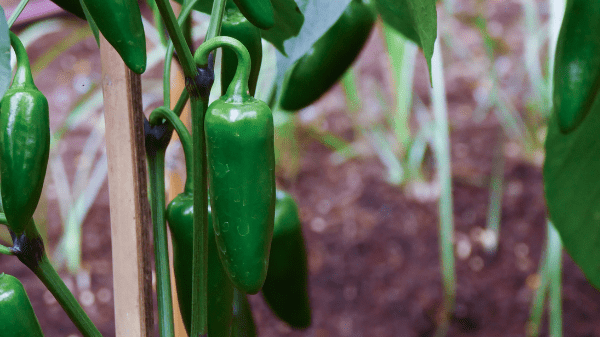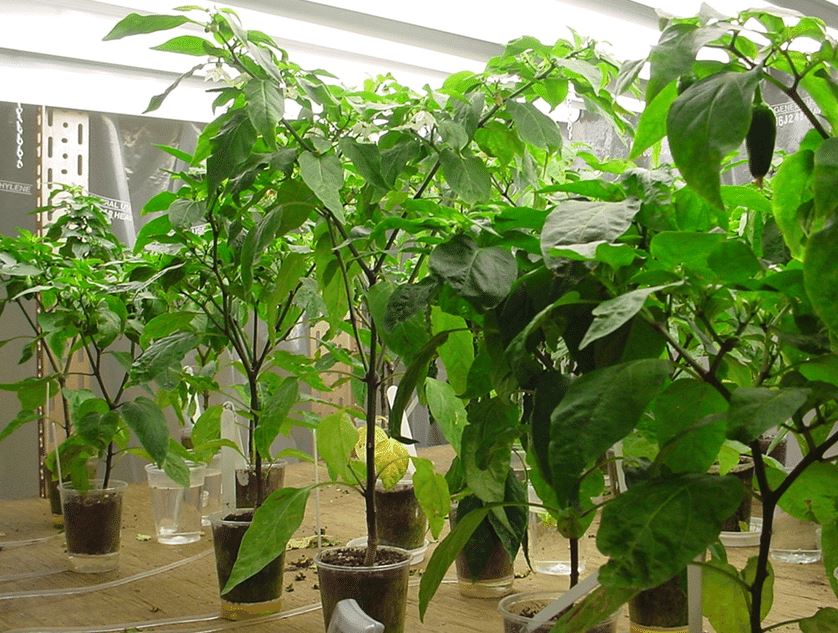
Looking to add some fiery flavor to your culinary creations? Growing jalapeños can be a great way to do so, and while it’s not overly difficult, having some prior gardening experience can certainly come in handy.
Hot peppers thrive in sunny conditions and require temperatures between 70 F° to 90 F° (21 C° to 32 C°) for optimal growth. These plants do not require a significant amount of growing space, as a mere half dozen plants can provide a family with peppers throughout the summer season. Additionally, compact varieties of peppers are available for cultivation in containers.
How to grow Jalapeños from seeds
- Start your seeds indoors 8 – 10 weeks before the frost date. Your local frost date will depend on your region.
- When growing jalapeño peppers from seed, it’s a good idea to use a heating mat to make sure your seedlings will be warm enough to germinate.
- After the danger of frost has passed, plant your seedlings 2 feet apart from each other in the garden. Place the rows 2 feet apart to allow for adequate airflow.
- Your peppers will mature 70 – 85 days after germination, depending on the variety.
Sunlight & Watering
Jalapeños are hot peppers native to Mexico, so they love a lot of sunlight and they thrive in warmer climates.
- Do not overwater your jalapeños! Too much soil moisture will make your peppers less spicy and may also breed diseases.
- Allow the top 2 inches of soil to dry out before watering again. Your plants will bounce back even if they have begun to wilt a little.
Harvesting
You can tell your jalapeños are ready for picking by their color and size.
- A fully mature jalapeño is red and sometimes has light brown stretch marks.
- Jalapeños can be picked while they are still green but they won’t be as hot.
- The size of a fully developed pepper depends on the variety you have, but is typically 3 – 4 inches long.
- It’s a good idea to use gloves when handling your hot peppers. Also, don’t rub your eyes!
Preserving
- You can store unwashed jalapeño peppers in a plastic bag in the fridge.
- For longer-term storage, jalapeños can be dried using a dehydrator or in the oven. Your oven should not be set higher than 130 degrees Celsius, since you don’t want to cook your peppers – you only want to dry them.
How to Grow Jalapeños Indoors
Growing your Jalapeño plants indoors extends your growing season and keep your plants safe from pests and diseases.
- Jalapeño seeds will not germinate if the soil temperature is less than 65 degrees F (18 degrees C). You can use a heated mat specially designed for seed germination to make sure your seeds are warm enough.
- Start your seeds in a starter tray. You can buy these from any plant nursery. Since they are compact, any seeds that don’t germinate won’t waste much space in your house.
- Place your seedlings in a window that gets lots of light. Jalapeños are native to a hot climate and need full sun. They can grow up to 3 feet tall, so make sure they will have enough room.
- Buy potting mix that is neutral or slightly acidic. If you’re not sure which soil is best for growing peppers, it’s best to ask at a plant nursery.
- When you move your seedlings to their pots, make sure they have at least 1-foot diameter of space. Pots 1 foot in diameter are a good size for growing jalapeño peppers.
- Using grow lights can help to make sure your jalapeños get enough sunlight if you don’t have a window that receives enough light.
How to Grow Jalapeños in a Pot

Potting your jalapeños is a great idea in colder climates since it allows you to move them inside for the cold season. You can also move them inside to prevent sun scalding on exceptionally hot days.
Pots should be at least 12 inches in diameter or more (5-gallon pails with drainage holes drilled in the bottom work great!)
Use fertilizer at half strength when growing jalapeños in pots.
Jalapeño plants grow typically up to 3 feet tall, so make sure they have enough space.
Varieties
Jalapeños come in different colors, sizes, and Scoville heat levels.
- TAM Jalapeños (~1000 SHU): These jalapeños are at the bottom of the heat scale. They have especially good tolerance to hot, dry conditions.
- Early Jalapeños (2500 – 5000 SHU) – This variety is ready for harvesting after only 63 days, which is an advantage for colder climates and short growing seasons.
- Purple (2500 to 8000 SHU): These peppers have the same heat and flavor as a standard jalapeño, the only difference being their purple color.
- NuMex Pinata (1000 to 5000 SHU): NuMex Pinatas come in various colors and are mild just like TAMs.
- Mammoth (1000 – 5000 SHU): As the name suggests, mammoth jalapeños are enormous compared to standard jalapeños, growing up to 5 inches long and 2 inches diameter. They also have great disease resistance.
- Jalapa Hybrid (up to 10000 SHU): Jalapas are the same size as average jalapeños but hotter.
- Jalafuego (4000 – 8000 SHU): Jalafuegos are middle-of-the-road in terms of heat and mature in about 70 days. They are especially disease resistant and the peppers are less likely to crack.
- Mattapeño: If you’re looking for an oddball variety to impress your friends, try growing a Mattapeño plant. It has a mutation that turns the leaves and peppers white with stripes. The mutated plant was discovered in a commercial greenhouse and seeds for it can be found online.
Pests
Peppers are a member of the nightshade family and they have common pests. If you’ve had problems with nightshade pests in the past, then consider planting your peppers in a different plot or try using pots.
- Potato beetles: these bugs have orange and black stripes and they lay orange eggs on the undersides of leaves. They are most notorious for attacking potatoes, but they have been known to attack all members of the nightshade family, including peppers. They kill the plants by eating all the leaves off.
- Aphids: these bugs attack many garden plants including peppers. They are often farmed by ants, so if you have aphids then you should also get rid of any ants in your garden. Aphids are repelled by strong scented plants, including herbs like basil and rosemary.
- Flea beetles: if you see many tiny holes in the leaves of your jalapeño plants, it means you have flea beetles. They are repelled by heavy mulching and the use of row covers.
How to speed up germinating seeds?
You can speed up germinating pepper seeds by trying out 3 ways. You should use the paper towel method first because it is the most used one. Pepper seeds in a moist paper towel in an airtight bag can germinate as fast as in 2 to 3 days. But again, it can take slightly longer for some varieties. Once you see the seeds sprouting, you can plant them in seed-starting soil.